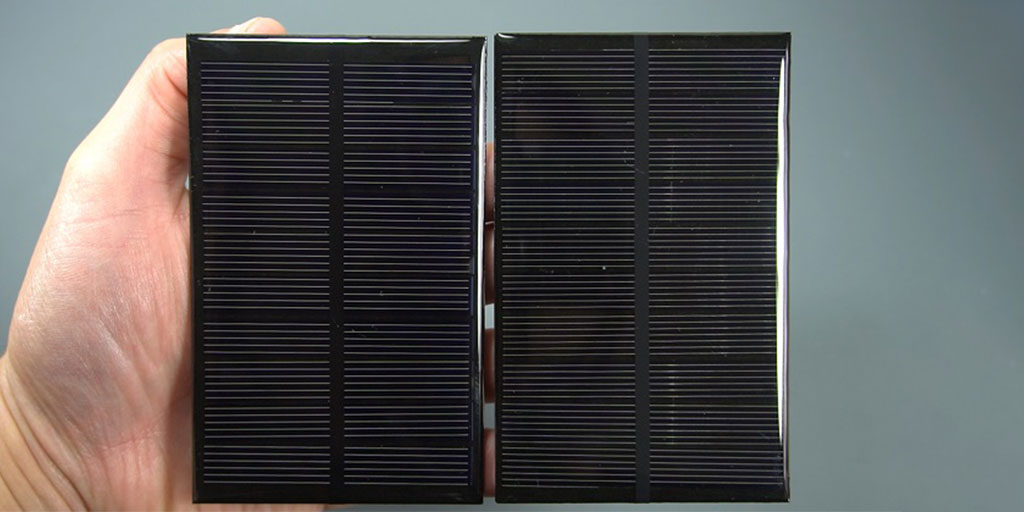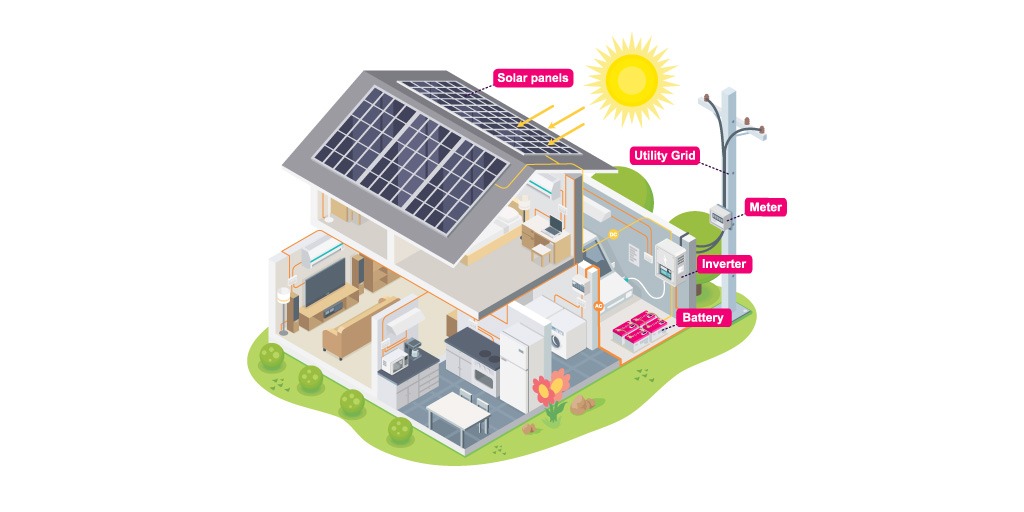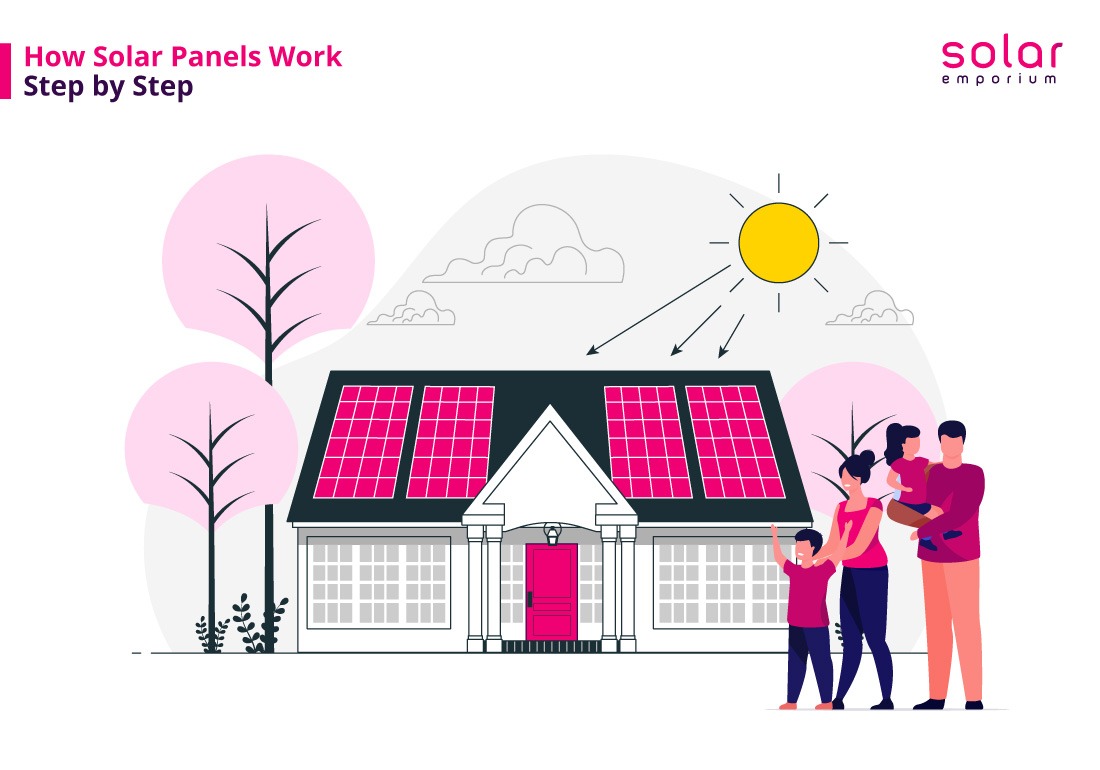The science of solar panels is a bit confusing for the most part. However, understanding how a piece of glass can generate enough electricity to power a whole community is an achievement.
Let’s look at how solar panels work.
Solar panels are essentially strategically designed silicon plates that can generate electricity when exposed to sunlight. Well, this may not be an accurate illustration, but this is how solar panels work from a broader point of view.
It’s okay if you have not quite gotten the idea yet. In the below article, I will explain how solar panels work, step by step. Stay tuned.
Before I get into the details, it’s essential for you to first understand how solar panels are made.
Otherwise, the rest won’t make sense. So, on that note, here is a short explanation-
The Science Behind Solar Panels
Solar panels are made of silicone, the most abundant semiconductor on the entire planet. Silicon is perfect for manufacturing solar cells because of its remarkable electrical, optical, thermal, and environmental properties. Along with its accessibility and competitive price point, it’s a wise choice for solar panels.
Also, in order for the solar panels to work, the semiconductor used in the panels has to be the one
that has the most light-absorbing nature, as well as must be able to withstand different weather.
Silicone ticks all the boxes in this department.

You might have noticed that I called silicone a semiconductor. In case you are not familiar with what a semiconductor is, let me explain. In broader terms, it’s a type of material that has the ability to easily conduct and keep a steady flow of electricity. The semiconductors are made of two separate regions (p-type and n-type), which together make a p-n junction to keep that steady flow of electricity.
Now that you understand the material and its ability, I will now explain how solar panels work.
Step-by-step How Solar Panels Work
Step 1: Sunlight Hits the Solar Panels – Generates Electricity
You already know that PV panels are made of silicone which is a semiconductor. So, when the sunlight hits the silicon panels, it triggers a photovoltaic effect. Sunlight is a form of energy, and photons (light particles) are powerful enough to break an intracellular bond between electrons and the nucleus. When such a powerful source of energy comes in contact with a semiconductor, in this case, silicone made solar panels, the electrons within are set in motion.
Within the p-n junction area in a semiconductor, the electrons residing in the n-type region start their journey to the p-type region, which is one-directional. This flow of electrons is what we popularly known as electricity.
So, in step one, the solar panels generate electricity.
Step 2: Inverter Converts the Electricity into a Usable Energy
The electricity generated by the panels in the first step is DC (Direct Current) current. It’s not a form of energy that can be consumed by household appliances because it’s one-directional. That’s where the inverter comes into action. It converts DC to AC (Alternating Current) current, which is a usable form of energy for the house.
It’s an essential step in the process without which solar panels wouldn’t be usable.
Step 3: Distribution Through the Switchboard
After the conversion from DC to AC, the entire flow gets connected to a switchboard. It’s like a
control panel of the solar ship that routes electricity to where it needs to be. There is no direct
routing of energy from the inverter to all the individual appliances of the house; that’s not how
solar energy works. In the electrical panel, the energy gets distributed into separate circuits.
Step 4: Utility Meter Rundown
Now that all the installation process is done, you are required to install a bi-directional
utility meter that will keep records of your energy consumption. In case you are connected to the
grid, the utility meter will keep track of how much electricity you are importing or exporting to
and from the grid.

Step 5: Your Own Tracking System
Just like it’s important to track the grid consumption, it’s as equally if not more important
to keep track of how much electricity your solar panels generate. For that, there are many EMS
(Energy Monitoring System) available in the market. Through them, you can understand the
pattern of your energy consumption and tweak changes here and there for a better outcome.
Step 6: Energy Storage- Solar Batteries
In case your solar system generates more electricity than you need, you have two options. One- is to export the surplus of energy back into the grid and two, is to store it in storage units, solar batteries.
If you decide to keep the surplus in batteries, you can use it at any time during the night without any ifs or buts. In my opinion, it’s a convenience that seems more desirable in the current situation of rising energy prices.
Points to be Noted
- The amount of electricity generated by the solar panels depends on the positioning of the panels, the type of the panels, the number of panels, and so much more.
- Depending on how much electricity is generated, you will have to choose an inverter accordingly.
- Only CEC (Clean Energy Council) approved installers and products will make you an eligible candidate for government-provided rebates. (We are CEC approved)
I have explained to you how solar panels work. Although, there is so much more to know about the process and to understand it at its core. If you are interested in knowing more about the process, we can set you up with one of our CEC approved solar experts for a free consultation session.
All you have to do is fill up the form below!







